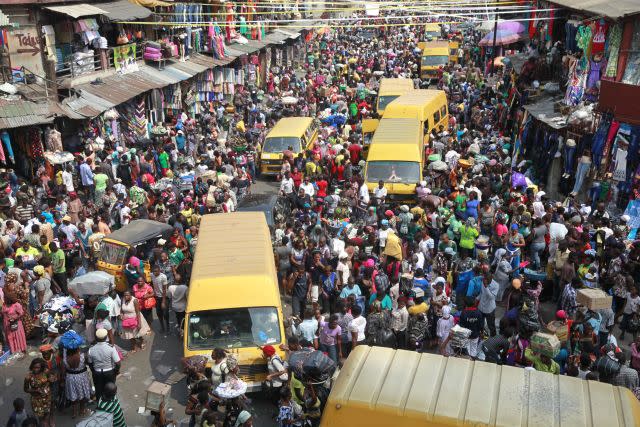80% of the world’s megacities are now in Asia, Latin America, or Africa

The world’s largest cities have increased in number and location. According to a new report from the United Nations Human Settlements Programme there were 29 megacities—those with more than 10 million people—in 2015, compared to just 14 in 1995.
And 79% of them were in the developing world, in Asia, Latin America, and Africa. It’s “an indication that the centre of gravity of the urban world is moving to developing countries,” the report says.
Among the world’s megacities, two are in sub-Saharan Africa: Lagos in Nigeria and Kinshasa in the Democratic Republic of Congo are on the list. Johannesburg, South Africa, with a population that’s expected to reach 11 million by 2025, is soon to join.

The world’s 600 largest cities account for 60% of global GDP. This figure will stay the same over the next decade, according to the report, but more of these cities will be in the developing world and are expected to play a larger role in the global economy. Besides prompting higher economic growth, through consumption and innovation, cities also encourage diversity through the co-mingling of different groups, the UN adds.
Yet, the rate of urbanization for a continent like Africa is both promising and troubling. As rural residents move to cities for work or in some cases to escape conflict, Africa has seen its urban population more than double in 20 years to 360 million last year. According to UN figures, that’s the fastest rate of any continent or region.
So far, few countries are prepared to provide the housing, social services, and jobs needed for this ongoing population boom. In Africa, 38% of the urban population is living in slums, more than at any other point in the last two decades, according to the UN.
Read this next: Megacities, not nations, are the world’s dominant, enduring social structures
Sign up for the Quartz Africa Weekly Brief — the most important and interesting news from across the continent, in your inbox.

Sign up for the Quartz Daily Brief, our free daily newsletter with the world’s most important and interesting news.
More stories from Quartz:

 Yahoo Finance
Yahoo Finance